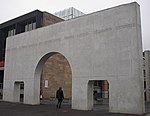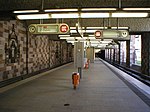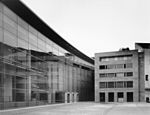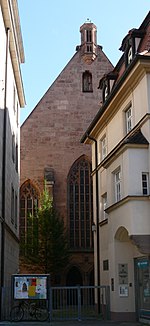Nuremberg Charterhouse
1380 establishments in Europe1380s establishments in the Holy Roman EmpireBuildings and structures in NurembergCarthusian monasteries in GermanyChristian monasteries established in the 14th century ... and 1 more
Monasteries in Bavaria

Nuremberg Charterhouse (Kartäuserkloster Nürnberg, also Kartause Marienzell) was a Carthusian monastery, or charterhouse, in Nuremberg in Germany. Its surviving premises are now incorporated into the Germanisches Nationalmuseum.
Excerpt from the Wikipedia article Nuremberg Charterhouse (License: CC BY-SA 3.0, Authors, Images).Nuremberg Charterhouse
Kartäusergasse, Nuremberg Altstadt, St. Lorenz
Geographical coordinates (GPS) Address Phone number Website Nearby Places Show on map
Geographical coordinates (GPS)
| Latitude | Longitude |
|---|---|
| N 49.4481 ° | E 11.0764 ° |
Address
Germanisches Nationalmuseum
Kartäusergasse 1
90402 Nuremberg, Altstadt, St. Lorenz
Bavaria, Germany
Open on Google Maps










